By Bohdan Borovyk
The European Space Agency (ESA) is engaged in space and Earth exploration in various areas and funds many space projects. To clearly define the direction of the agency’s development, space Programs are created with specific goals and objectives. This article describes important ESA Programs, their parts, and space missions.
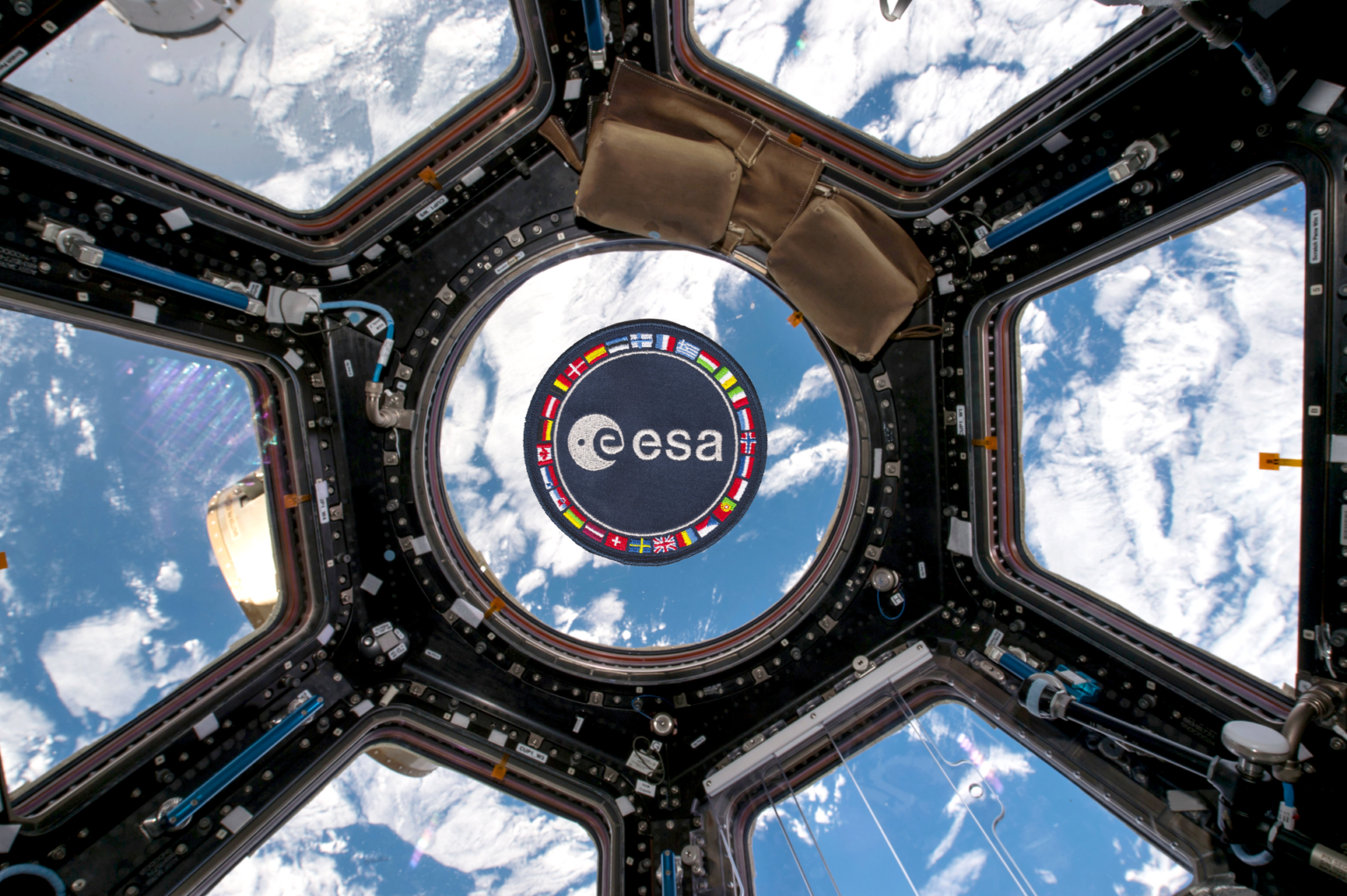
Space exploration
Launched back in the 1980s, the Science Program is the European Space Agency’s main Program for exploring the solar system and space.
The Science Program began with the Horizon 2000 Program, which ran from 1985 to 2005. Part of Horizon 2000 was the development of the Rosetta space mission to study the Churyumov-Gerasimenko comet discovered by Ukrainian astronomers. This Program also helped to create the Planck and Herschel space observatories, which studied relic radiation and the evolution of stars and galaxies, respectively.
The next Program in the history of the Science Program was Horizon 2000+, which developed the Gaia, Lisa Pathfinder and BepiColombo missions over a ten-year period. The Gaia Space Observatory is helping scientists to make a detailed map of our galaxy, and is expected to finish its work in 2025. In addition, at the end of 2025, BepiColombo is scheduled to enter orbit around Mercury, which will allow scientific instruments on board the spacecraft to thoroughly investigate the surface, exosphere and magnetosphere of the planet. The Lisa Pathfinder spacecraft has already successfully completed its mission to demonstrate the technology for observing gravitational waves in space.
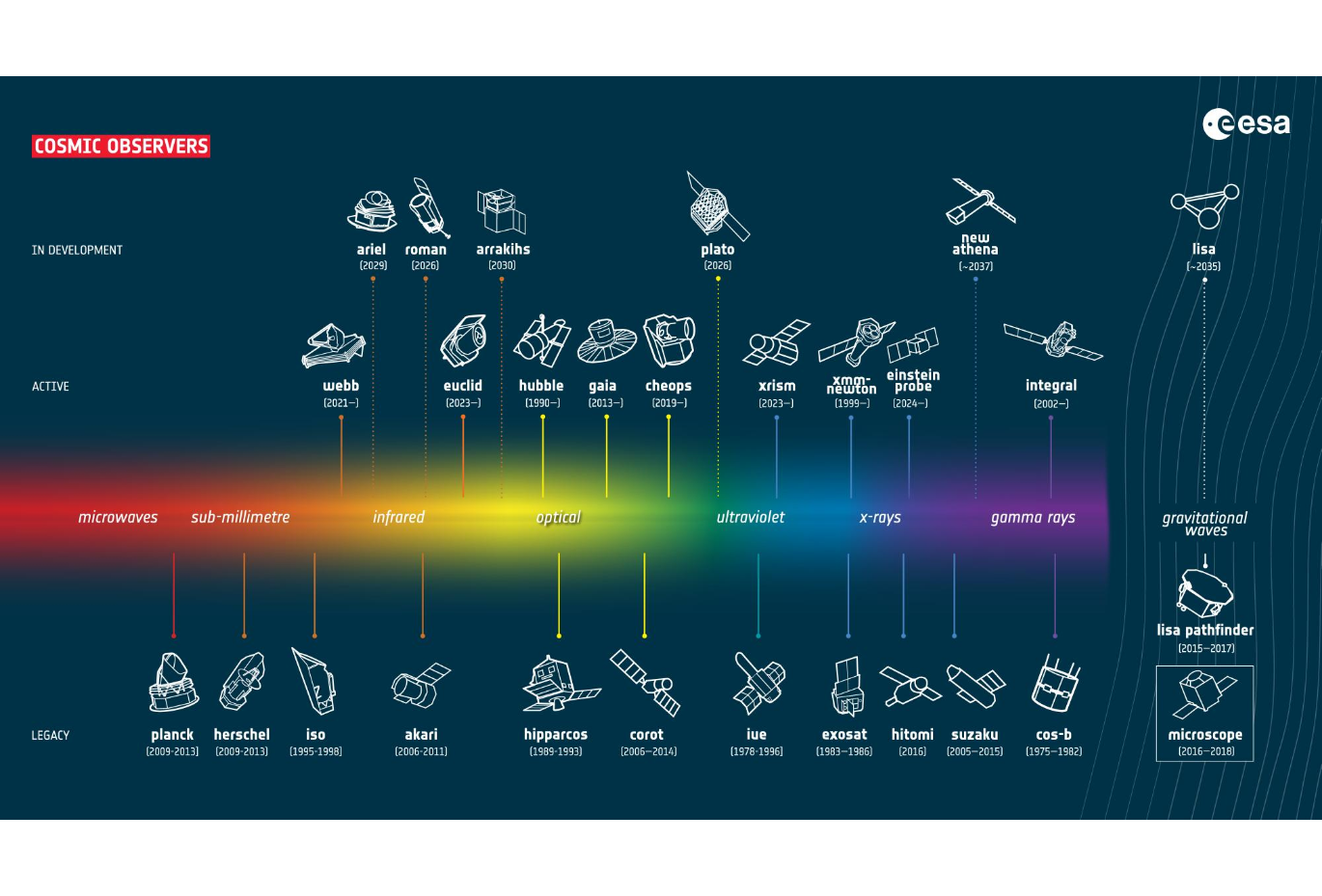
An active part of the Science Program is the Cosmic Vision Program, which will run until 2025. Its goal is to better understand the processes of the birth of the Universe and the Solar System.
Two space observatories have been launched into Earth orbit for astronomical research: Cheops, designed to observe exoplanets, and Euclid, which studies dark matter and dark energy. In 2035, the Athena X-ray telescope and the Lisa gravitational wave detection spacecraft are expected to be launched.
The second task of the Cosmic Vision Program is the study of the solar system, which is carried out by the Solar Orbiter and JUICE spacecraft. The Solar Orbiter mission is aimed at observing the Sun and its polar regions, which is possible due to the high inclination orbit of the Sun. The object of study of the JUICE mission is much further from the Sun — the station will study the moons of Jupiter.
After the completion of Cosmic Vision, the European Space Agency will work on the Voyage 2050 Program. The main planned missions include landing on Saturn’s icy moon Enceladus, studying the atmospheres of exoplanets and further studying the birth of the Universe and the first space structures.
In parallel to the Science Program, the European Space Agency had the Aurora program. Its goal was to formulate and develop a strategy for exploring the solar system using not only automatic but also manned missions for the future human exploration of outer space.
In 2001, the development of the ExoMars Program began as part of the Aurora Program. It consists of two missions dedicated to the question of past life on Mars. The first mission went to the Red planet in 2016 and consisted of the TGO spacecraft, designed to study the atmosphere of Mars, and the Schiaparelli demonstration lander, which crashed on landing. The launch of the second mission of the ExoMars Program in the form of the Rosalind Franklin rover is scheduled for 2028.
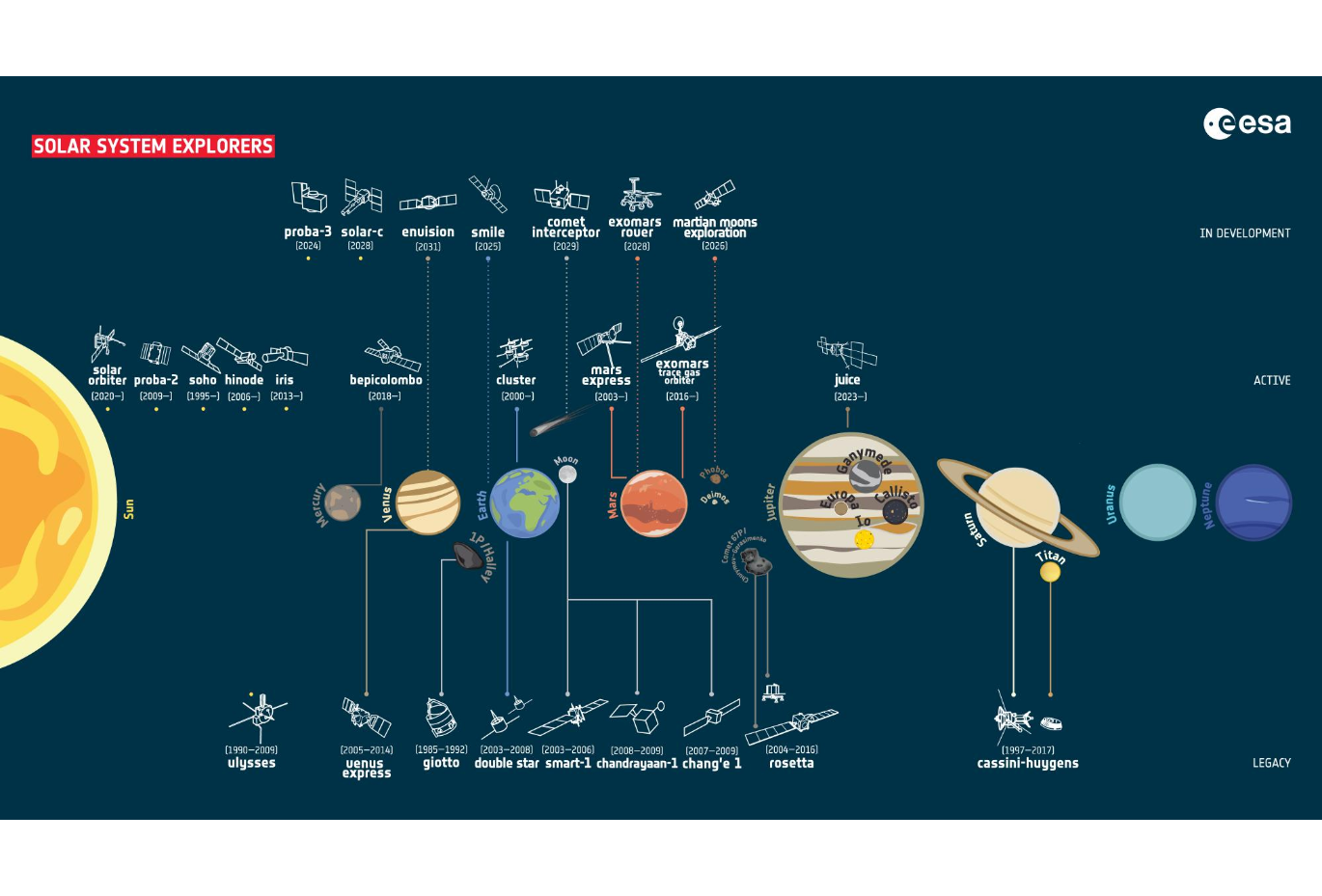
The successor to the Aurora Program is called Terra Novae. Its three main targets are low Earth orbit, the Moon and Mars. By 2035, the Program is expected to launch new long-term missions to the International Space Station, the first manned flights on the Orion spacecraft, as well as build two habitat modules for the Lunar Gateway station in lunar orbit and deliver research spacecraft to the lunar surface.
The partnership with NASA in the development and management of the James Webb Space Telescope is an equally important ESA project, although it exists outside the main scientific Programs. The European Space Agency has developed several instruments for the observatory, provided an Ariane 5 launch vehicle for launch and 15 scientists to participate in the telescope’s management.
Earth observation
The Living Planet Program focuses on studying the Earth and observing the planet to predict weather conditions and manage resources. According to these tasks, the Program’s spacecraft are divided into two classes: Earth Explorers and Earth Watch, respectively.
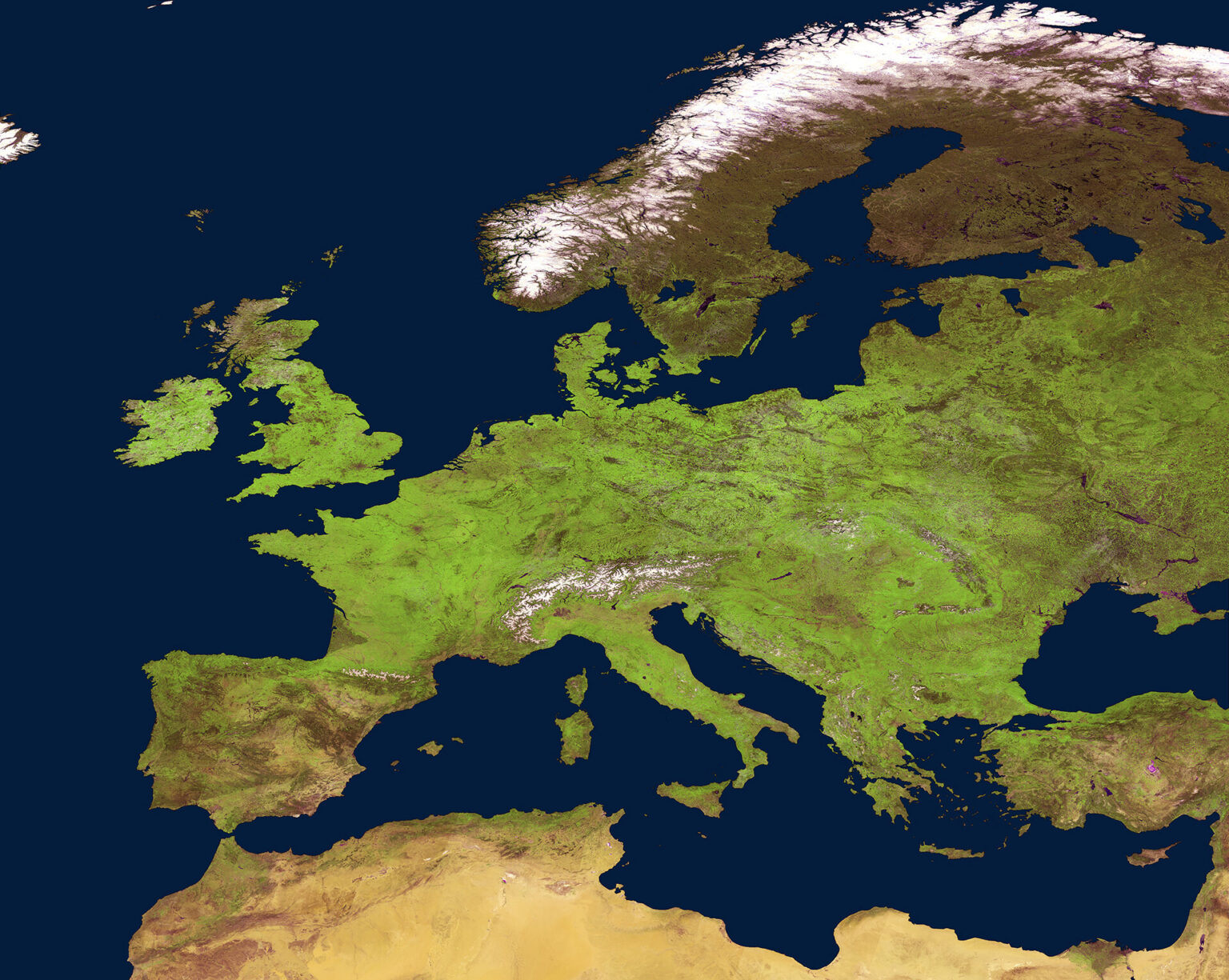
The most recently launched Earth Explorers spacecraft is EarthCARE, developed in partnership with Japan to study clouds and aerosols, as well as reflected and emitted radiation from the Earth’s surface and atmosphere. The only existing Earth Watch mission was called PROBA-V. Its vegetation observation task was completed in 2021.
Space security
ESA has created the Space Safety Program to monitor possible threats from space. Its objectives are to monitor space weather and potentially dangerous asteroids, deflect such asteroids from their collision path with Earth, and reduce space debris and develop more environmentally friendly space technologies.
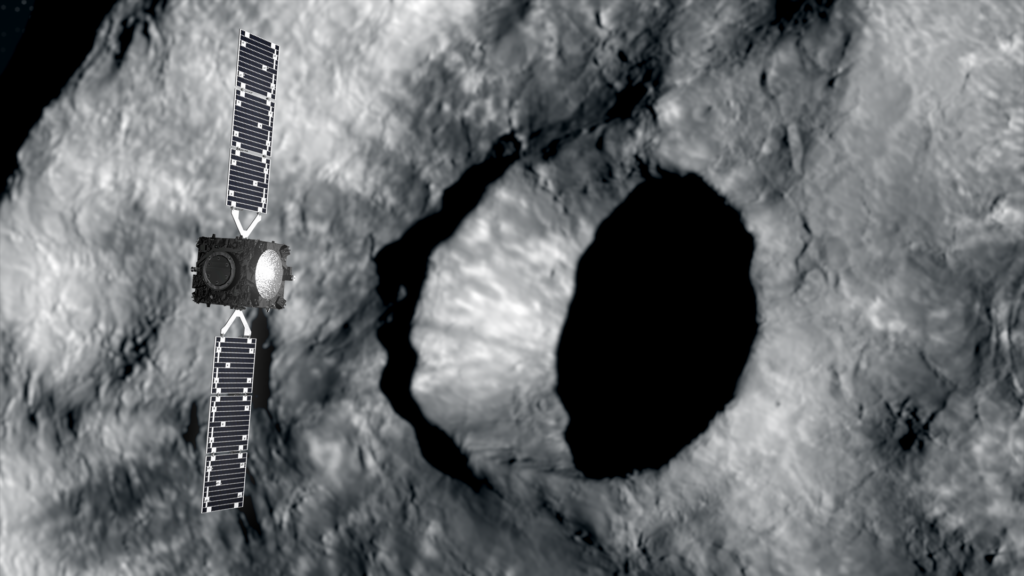
The main missions of the Space Safety Program are Vigil, Hera and ClearSpace-1. The Hera spacecraft is expected to be launched this year. The mission’s goal is to study the double asteroid system of Didymos and Dimorphos after the DART spacecraft collided with Dimorphos and changed the system’s orbit as a result. The upcoming Vigil mission will focus on observing the Sun and warning of hazardous solar activity. The ClearSpace-1 mission, being developed in partnership with ClearSpace SA, is designed to demonstrate the de-orbiting of the PROBA-1 satellite.
Satellite navigation
The European Space Agency operates its own satellite navigation system called Galileo. The Galileo satellites provide ground-based devices with location information on a par with the US GPS system.
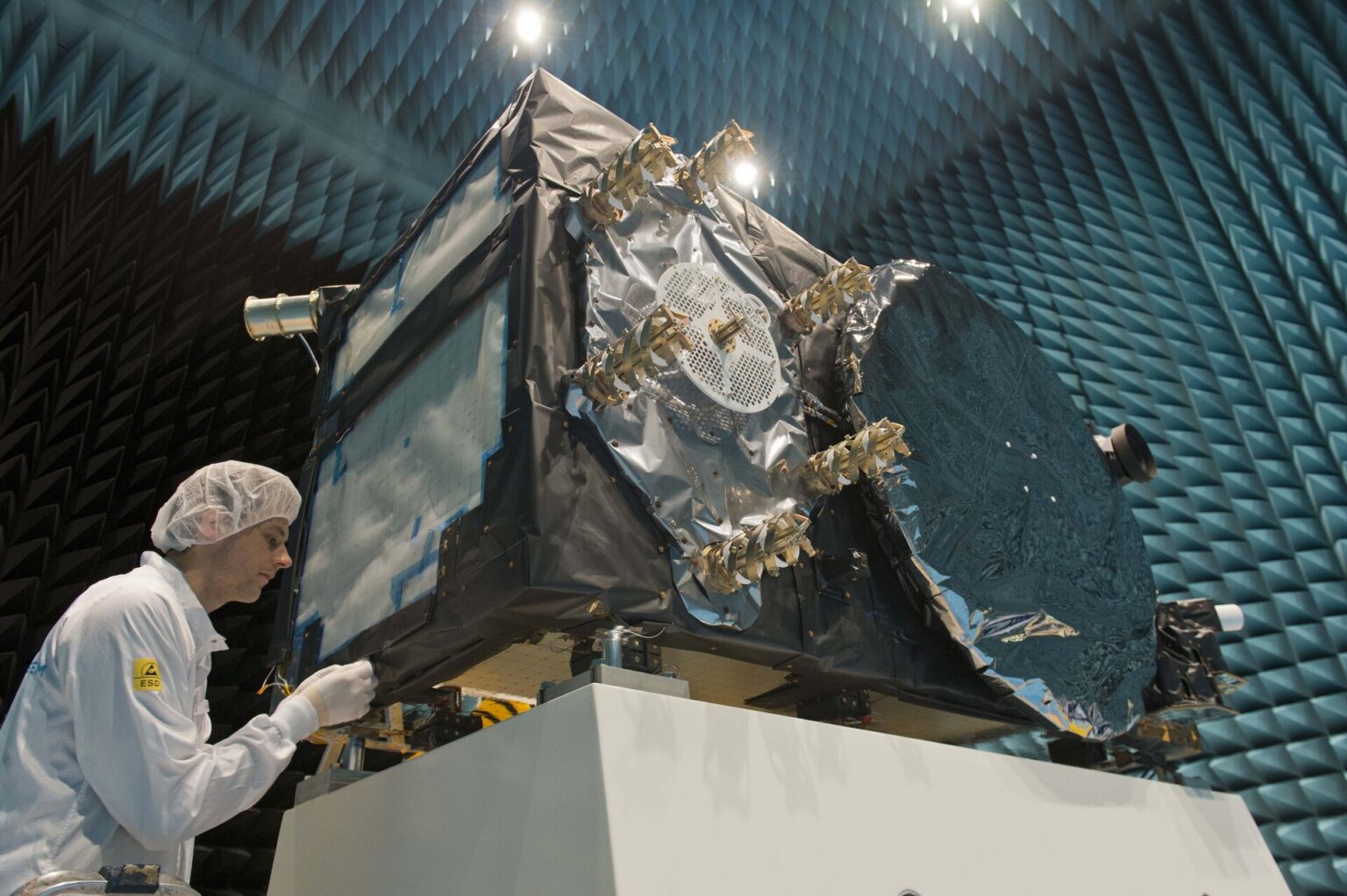
A Galileo satellite prepares for testing before launch. Source: ESA/OHB-S. Bury
The system consists of 30 spacecraft in Earth orbit at an altitude of 23 thousand kilometres. The inclination of the satellites’ orbits is 56 degrees, which gives Galileo coverage of users on Earth up to latitude 75 degrees, which corresponds to the northernmost point of Europe, and even further. Galileo is capable of determining the location with an accuracy of less than one metre, compared to the accuracy of three metres of the GPS system.
Satellite communications
The ARTES (Advanced Research in Telecommunications Systems) Program is responsible for the development of satellite communications at ESA. It is divided into three areas: the creation of new satellite communications technologies, the development of applications for such technologies, and the creation of projects in partnership with satellite operators and manufacturers.
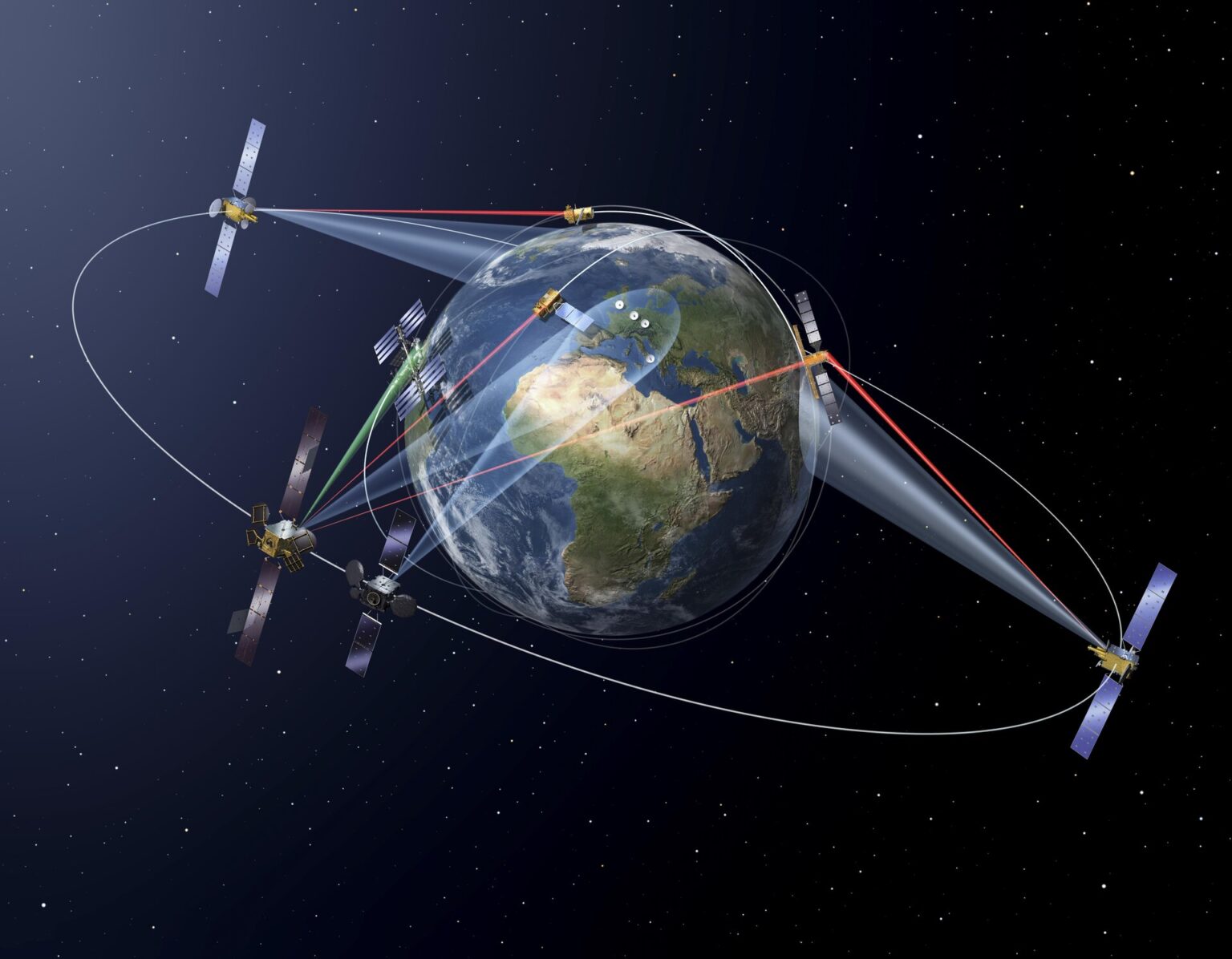
Part of the ARTES Program is the European Data Relay System (EDRS), a constellation of satellites in geostationary orbit that transmits information between spacecraft, drones and ground stations. EDRS can provide communication to users in the absence of communication with ground stations or low-orbit satellites. The EDRS system is similar to the US TDRSS, but has a higher data transfer rate due to the use of laser communication. Today, the system consists of two geostationary satellites and many ground stations.
International Space Station
The European Space Agency is one of the members of the International Space Station project. ESA’s main contribution to the development of the ISS is the Columbus laboratory, ATV cargo spacecraft, launch vehicles, software, and €8 billion in funding.
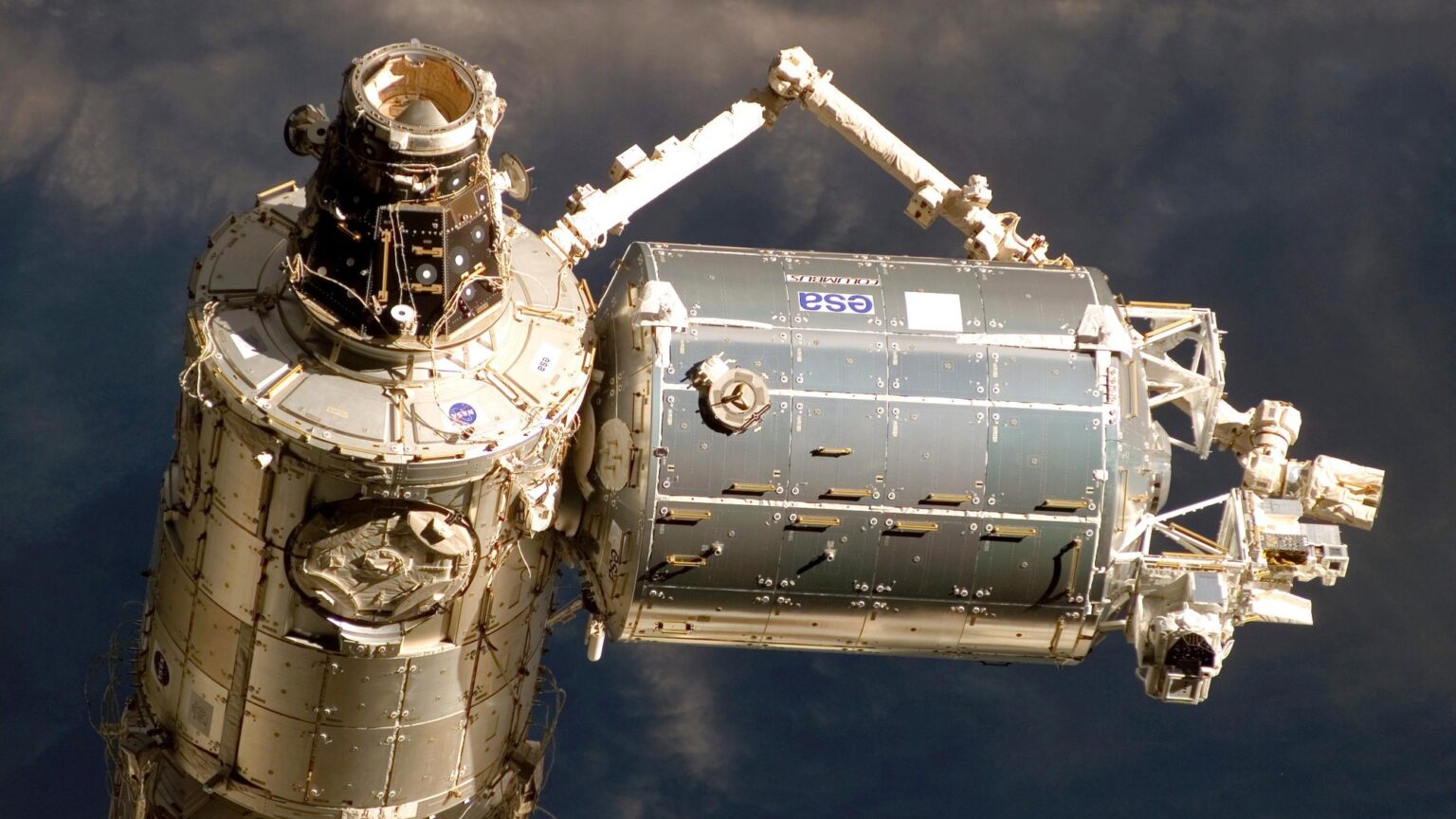
Scientific research is being carried out on board the Columbus module as part of the ESA SciSpace Program. They relate to fluid dynamics, materials science, fundamental physics, physiology, biology and exobiology. In addition to Columbus, ESA has developed the Harmony and Tranquility connecting modules with docking nodes for spacecraft, as well as the Cupola module with a panoramic view of the Earth and the station’s surroundings. In 2021, the European robotic arm ERA joined the station.
Between 2008 and 2015, five ATV cargo ships were launched to the ISS, each of which could carry up to 6.6 tonnes of payload and was capable of automatic docking. The technologies developed for the ATV are now used in the ESA-designed service bayfor the Orion spacecraft.
Launch vehicles
The European Space Agency has created the Future Launchers Preparatory (FLPP) Program to develop technologies for use in new European launch vehicles. The Program started in 2004 with the development of technologies for the Ariane 5 successor. Today, FLPP’s scope is broader and covers all future European launch vehicles.
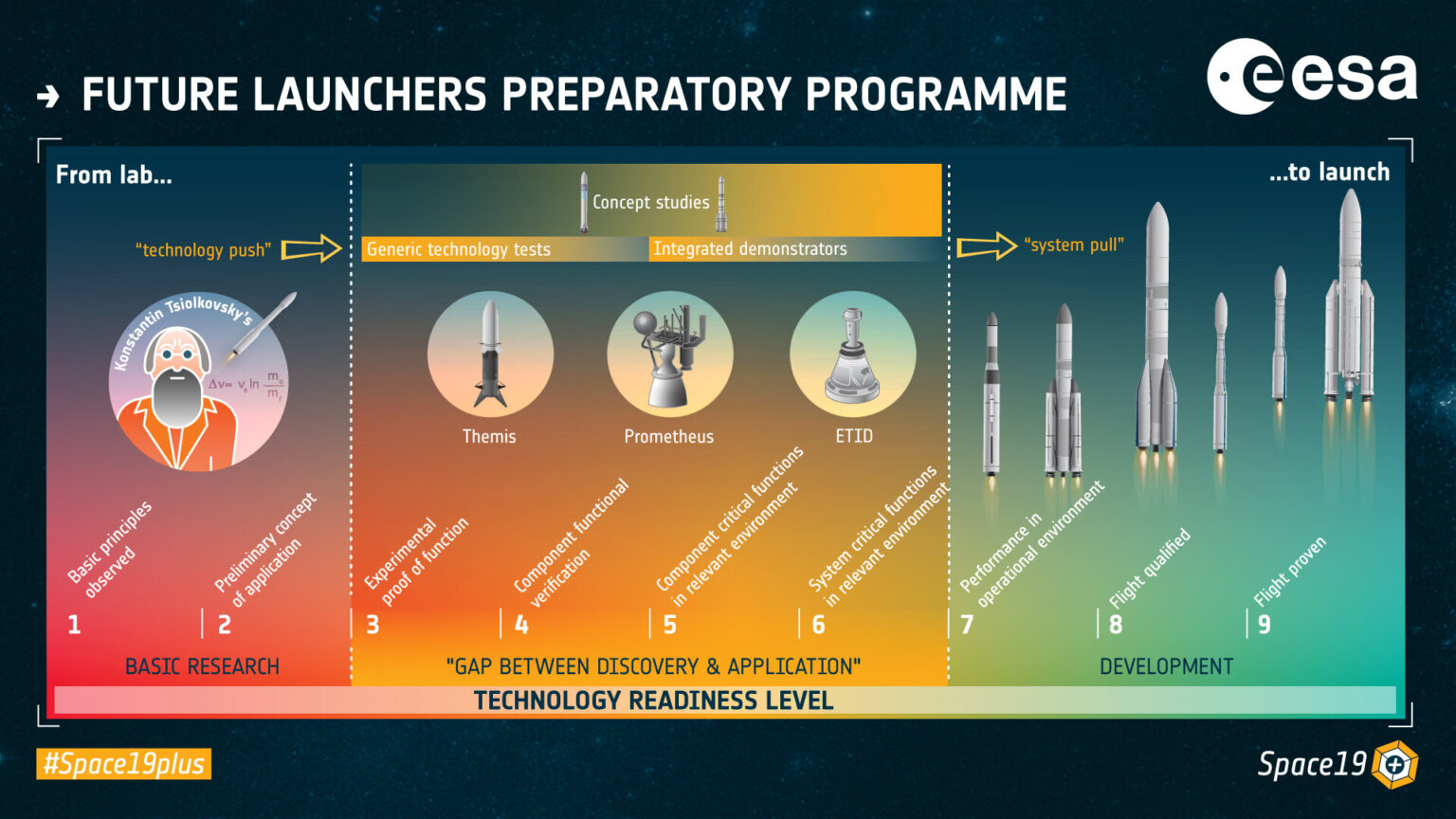
The Prometheus rocket engine developed under the FLPP is low-cost and uses liquid methane as a fuel. Its use is possible in the future on the Ariane 6 rocket. Another outcome of the Program was the development and testing of the Expander-cycle Technology Integrated Demonstrator (ETID) experimental engine. This experience was important in the development of the Vinci engine for the second stage of Ariane 6.
The FLPP Program is researching alternative materials to lighten the design of launch vehicles, thermal insulation technologies for cryogenic stages, improved methods of manufacturing rocket structures, and new materials and separation systems to reduce payload vibrations during launch. In addition, the FLPP is developing technologies for reusable launch vehicles and creating new automatic flight control systems, including for stage landing.

